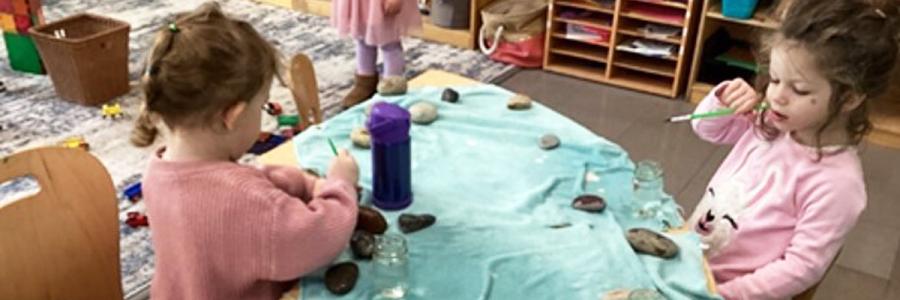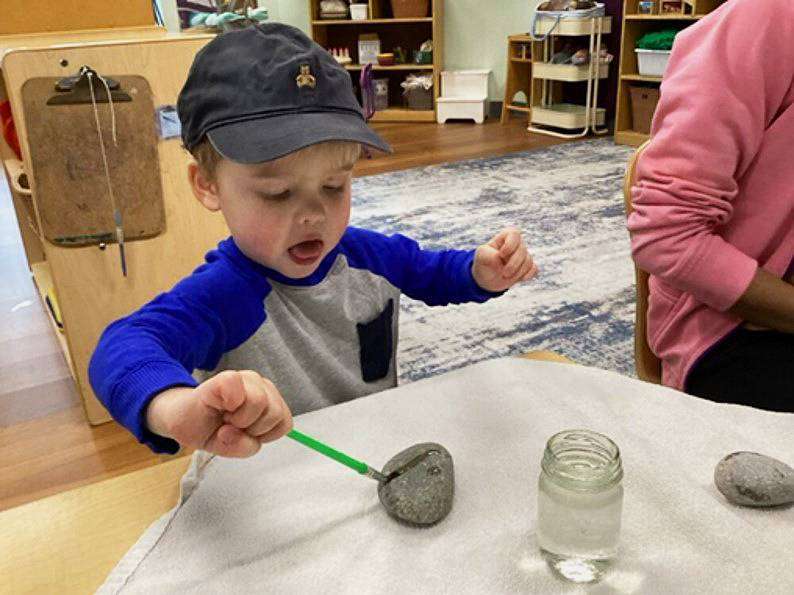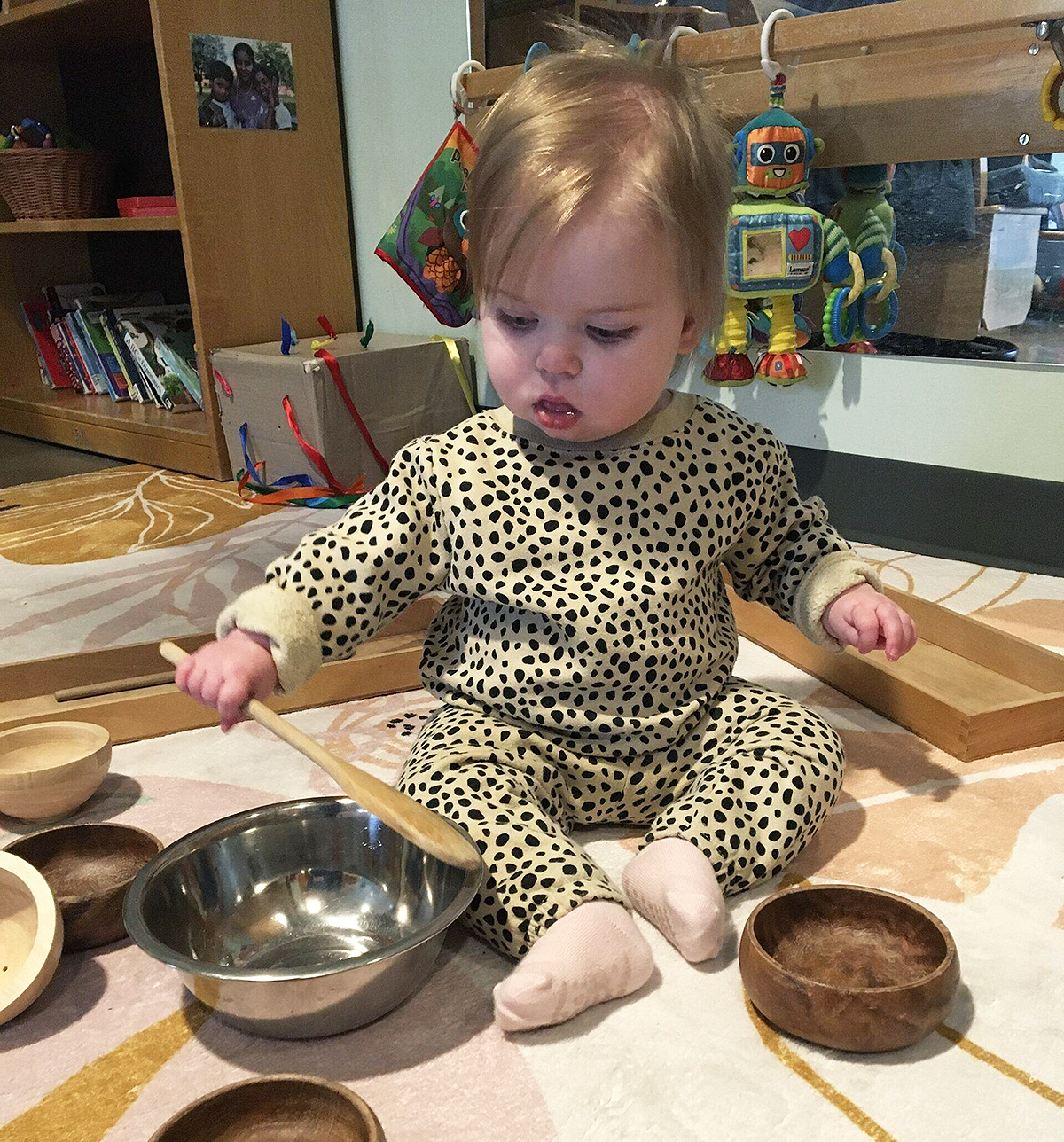
Commonality: Child-Centered Learning
Focuses on the individual needs, interests, and developmental stages of each child.
Rock Painting: An Exploration of Cause and Effect
Rock Painting demonstrates planning around the interest of the children in painting. It also demonstrates how an educators can use an art and science activity to support fine motor development which supports early writing skills. All while being fun and hands on!


The Westport room children are interested in painting, and the teachers introduced a new medium to paint with:
water! The purpose of the activity is to experience the difference between painting with water and painting with
tempera paint. The teachers asked the children questions: does the water look different from painting with
colored paint? Does the rock look different when you use water on it? The activity captured many children’s interests
for a long time.
As the children painted, we observed that the water made the rocks darker in color and sometimes revealed stripes
of different colors! This was a great process for exploring cause and effect and working on fine motor
control necessary for holding writing utensils.
Individualizing Physical Development Opportunities
We have noticed a growing interest in emptying and filling baskets. Today we planned an experience with various sizes of wooden and metal bowls, and large spoons.
One infant who has been developing confidence in tummy time explorations began this experience sitting up. After several minutes of engaging with bowls and a spoon while sitting upright, the teachers helped her move her body to her tummy.

The teachers intentionally added plastic balls into bowls. The child was immediately drawn to the brightly colored balls and began grabbing them and taking them out of the bowl. While in the prone position, the child successfully emptied the bowl. The teacher helped to refill the bowl, and the child eagerly repeated the process of emptying each ball again. The child and teacher cycled through this process three times.
Early Childhood Education in Greater Kansas City
Share your stories
Submission form
Does your program have a story that exemplifies holistic development? Let us know and it might be featured here.